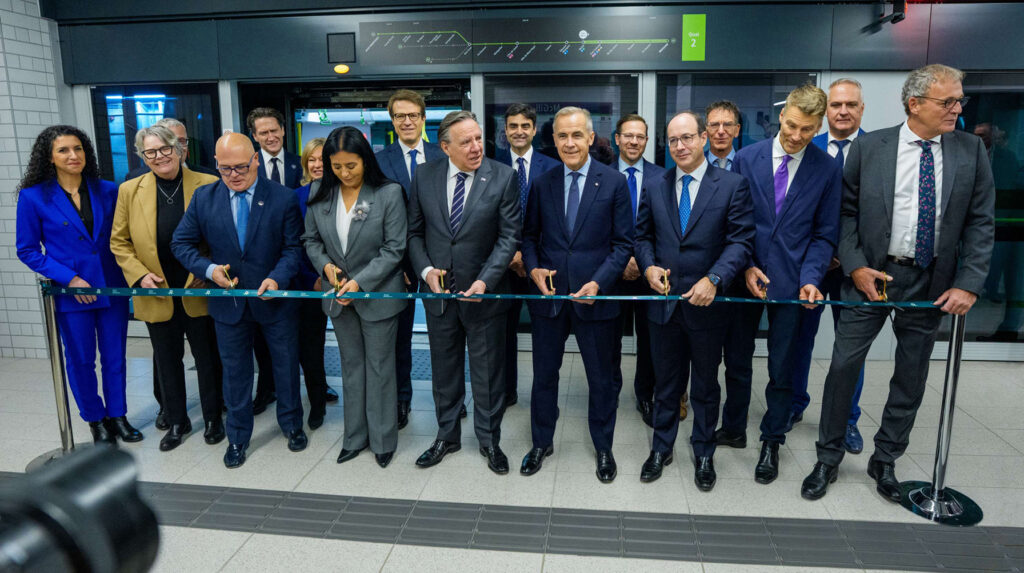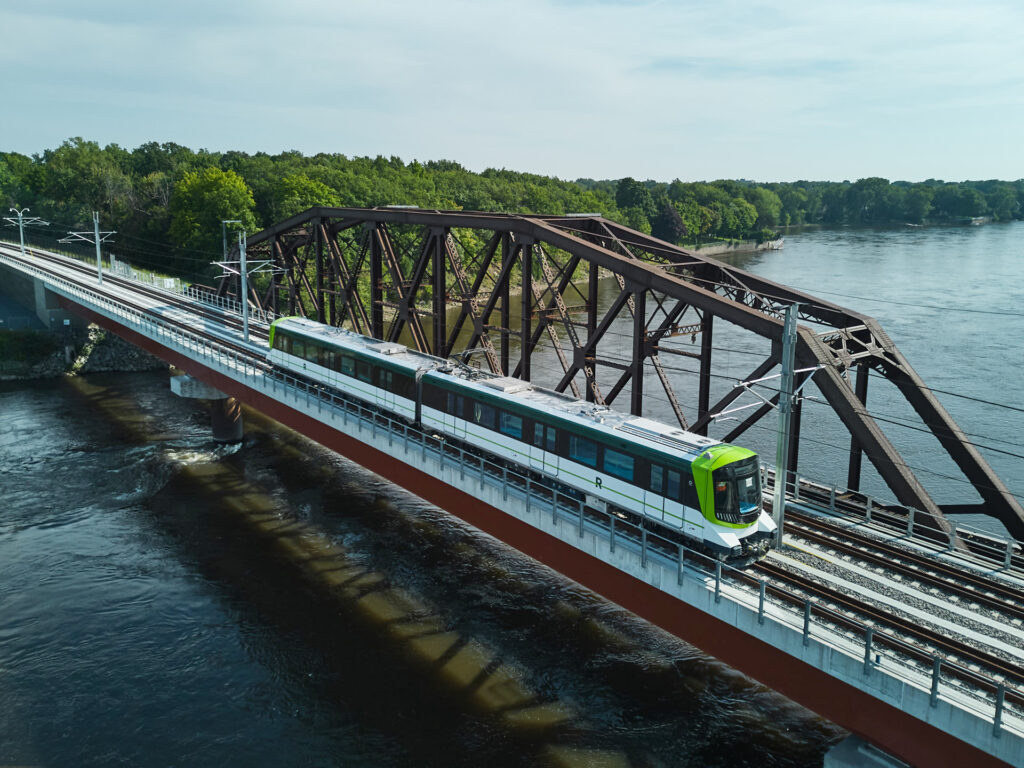Major REM Expansion Signals Canada’s Commitment to Bold Transit Development
11/19/2025

Canada’s largest public transit investment in half a century has reached a defining moment. On Nov. 14, Canadian Prime Minister Mark Carney joined transit leaders in Montréal to open the second major phase of the Réseau Express Métropolitain (REM), an expanding fully electric rapid transit network designed to reshape mobility for the Greater Montréal Area.
The new 30-km extension stretches from downtown Montréal to Deux-Montagnes, adding 14 stations and bringing REM service to nearly 50 km across 19 total stations. The network now links communities from both the North and South shores to downtown while reaching into the West Island—connecting more people to fast, high-frequency electric rail.
Calling the REM “a world-class infrastructure project,” Carney underscored its national significance. “As Québec’s largest public transit project in half a century, the REM is testament to our ambition to build big, build bold, and build Québec strong so we can build Canada strong.”

Once fully complete, the REM network will span 67 km and 26 stations, including direct service to Montréal-Trudeau International Airport. The system will accommodate up to 170,000 daily users and reduce greenhouse gas emissions by an estimated 100,000 tons per year—the equivalent of removing about 30,000 cars from the road daily. With a travel time of just 25 minutes from downtown to the airport, REM will deliver a level of speed and convenience rarely seen in North American airport rail service.
Economic impacts are also substantial. The project has created 34,000 construction jobs, will support 1,000 permanent positions, and is expected to generate more than $2 billion in wages once fully operational. Carney and other leaders point to REM as proof that public transit investment drives not only mobility gains, but workforce development, industry growth, and urban competitiveness.
The transformation continues. A major airport expansion is underway, supported by a $1 billion loan from the Canada Infrastructure Bank for a new terminal building that will directly connect air travelers to REM. This project, the largest infrastructure renewal in Montréal-Trudeau Airport’s history, is designed to expand capacity, improve passenger flow, and enhance multimodal travel as REM service reaches the terminal in 2027. Service to Anse-à-l’Orme is expected to open in spring 2026.

Canada’s federal government is also backing other transformative rail initiatives with global implications, including the proposed Alto High-Speed Rail line. The 1,000-km corridor would link Toronto, Montréal, and Québec City at speeds of up to 300 km/hour—cutting travel times in half, connecting nearly half of Canada’s population, and potentially generating 51,000 construction jobs and $35 billion in GDP growth while saving an estimated 25 million tons in emissions.
The REM’s latest milestone offers a clear message for North America: when governments invest at scale in modern electric rail, the result is not just faster travel but cleaner cities, competitive economies, and stronger regional connections. Montréal is demonstrating what next-generation transit looks like—and what is possible when a nation commits to building boldly for the future.